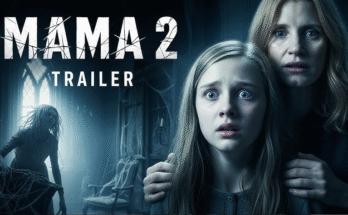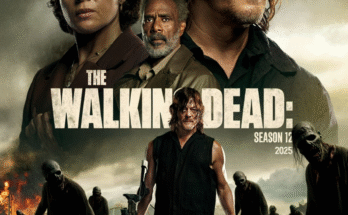Every generation gets the monsters it deserves — but never have two nightmares collided with such apocalyptic precision. Pennywise vs. Freddy Krueger is not just a crossover; it’s a declaration of war between the architects of fear themselves. What happens when dream and dread consume each other? When terror feeds on terror? The result is an experience so wild, so visually deranged, it redefines the boundaries of horror cinema.

The film opens on the cursed town of Derry, years after the Losers Club defeated Pennywise. The drains are dry, the sewers silent — but silence, as this movie reminds us, is only the breath before the scream. Teenagers begin vanishing again, not from the streets, but from their dreams. One by one, they fall asleep and never wake. Their bodies remain intact, but their minds… gone. The town psychiatrist whispers a name the world thought forgotten: Freddy Krueger.
Meanwhile, in the smoldering ruins of Springwood, a psychic disturbance awakens something else. Pennywise — the cosmic predator, the eater of worlds — senses new prey in the realm of dreams. When Freddy’s power begins bleeding into Derry’s soil, the clown follows it like blood in water. Their collision is instantaneous and catastrophic — a devouring of realities where time, gravity, and sanity collapse.

The premise is diabolical in its simplicity: Freddy feeds on the fears of the sleeping; Pennywise feeds on fear itself. Their first encounter is not a fight, but a feeding frenzy — both trying to consume the same terrified victim. The scene unfolds like a hallucinatory ballet of shadows and screams: Freddy laughing through razor blades as Pennywise’s smile splits impossibly wide. When the victim’s fear explodes into a storm of crimson balloons, Freddy snarls, “My house,” and slashes the air — cutting through the dream itself.
Director Andy Muschietti (IT, The Flash) returns to his horror roots with unrestrained imagination, crafting a visual symphony of chaos. The film’s design language is breathtaking — blending the surreal elasticity of dreams with the rotten sweetness of Pennywise’s universe. Streets twist into mazes of teeth, beds bloom into flesh, and mirrors drip like melted time. There’s a moment when Derry’s water tower tilts into the sky like a blood-red moon — a sight that feels biblical in its madness.
Bill Skarsgård delivers a transcendent performance as Pennywise — no longer the dancing clown but a full-blown cosmic god of fear, his every gesture a mockery of humanity. His voice shifts from whispers to roars that rattle the bones of the theater. Opposite him, Robert Englund returns as Freddy with the precision of a maestro — gleeful, cruel, and terrifyingly self-aware. “We both eat fear,” he sneers, “but I like mine screaming.”

The film’s strength lies not only in spectacle but in its understanding of myth. Freddy represents control — the manipulator of dreams, a craftsman of terror. Pennywise embodies chaos — the unknowable, ancient hunger that mocks order. Their battle becomes philosophical as much as physical. In one unforgettable scene, Freddy invades Pennywise’s subconscious, only to find that the clown’s mind is infinite — a void filled with floating children, spinning in endless laughter. Freddy’s blades tremble. For the first time, the nightmare king feels fear.
From there, the film becomes a descent into insanity. The laws of physics collapse; Derry becomes an ouroboros of time, where victims die twice, and nightmares loop endlessly. Muschietti uses CGI not as a crutch but as an art form — bending architecture and flesh in ways that evoke both Inception and Hellraiser. The violence is grandiose and poetic: a carousel of corpses spinning in dreamlight, a hallway of mirrors that screams back, rivers of blood reflecting a thousand faces.
And yet, beneath the horror, there’s something strangely mournful. Both monsters are trapped — doomed to exist only where fear does. When Freddy hisses, “We’re just stories,” Pennywise answers, “Then let’s end the world that reads us.” Their final confrontation takes place inside the collapsing Dreamverse — an interdimensional void of nightmares folding in on themselves. The sequence is pure cinematic insanity: a vortex of laughter, fire, and silence, as both creatures tear reality apart in a mutual act of annihilation.

When the screen fades to white, all that’s left is a child’s red balloon floating above a burnt Elm Street sign. It bursts — and the echo sounds like a heartbeat.
💬 Film Verdict:
⭐ 9.7/10 — Visually feral, philosophically audacious, and relentlessly terrifying. “Pennywise vs. Freddy Krueger” isn’t just a crossover — it’s an apocalypse of imagination. A nightmare so vivid, it leaves claw marks on your soul. 🎈🔥💀




